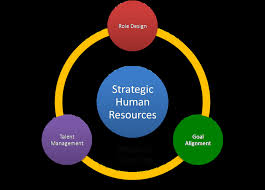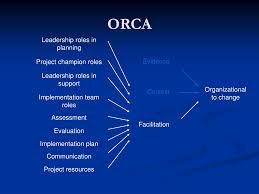
HR practices at Amazon have come under increasing scrutiny, despite the company’s undeniable dominance in the fast-paced realm of e-commerce and logistics. With a workforce exceeding 1.5 million across more than 20 countries and a history dating back to 1994, Amazon has consistently pushed the envelope on customer experience and operational efficiency. Yet, its remarkable growth has often been shadowed by criticism surrounding employee well-being and workplace culture. To foster sustainable expansion and preserve organizational health, a strategic overhaul of HR practices is urgently required. Current HR Practice Needing Change
One of the most contentious HR practices at Amazon is its rigorous performance management system, commonly known as the “rank-and-yank” method. This approach frequently assesses employees against their peers, rewarding the top achievers while letting go of the lowest performers. While it encourages high performance, it has also been associated with employee burnout, diminished morale, and high turnover rates—especially in fulfillment centers and corporate offices. The cutthroat competitive atmosphere can hinder collaboration and elevate stress levels, creating a work environment that, although productive in the short run, could prove harmful in the long term.
1. Lewin’s Change Management Model – Unfreezing Stage:
According to Lewin, the first step to successful change is realizing that it’s time to shake things up and let go of outdated processes. The ongoing employee dissatisfaction, the documented walkouts, and the rise in unionization efforts all point to a pressing need for Amazon to take a hard look at its performance policies.
2. Kotter’s 8-Step Change Model – Creating a Guiding Coalition:
Kotter emphasizes building support coalitions to lead change. HR must work with operational managers, employee advocates, and data analysts to build a reformative alliance that promotes a more humane performance system.
3. ADKAR Model – Desire:
The ADKAR model stresses the importance of individual buy-in. Data suggests that employees desire better work-life balance, fairness, and career development—elements under-addressed in Amazon’s current performance system. Aligning policy with these desires will improve change adoption.
To assess whether Amazon is ready to embrace this HR transformation, diagnostic tools are critical:
1. Burke-Litwin Organizational Assessment Model:
This tool helps examine the systemic interrelation between leadership, work environment, motivation, and HR practices. It’s ideal for large, complex organizations like Amazon, as it examines both external and internal drivers of change.
Organizational Readiness for Change Assessment (ORCA):
ORCA focuses on the psychological and structural preparedness of employees and leaders to support change. It is particularly useful in identifying cultural and leadership gaps that may hinder implementation.
Burke-Litwin provides a thorough, system-wide view that’s crucial for spotting misalignments in HR, leadership, and the overall mission of an organization. ORCA adds to this by gauging staff motivation and their readiness to embrace change—something that’s especially important in high-pressure settings like Amazon.
When we look at Amazon through the lens of ORCA, we see a mixed readiness profile. On one side, the company boasts a strong technological foundation, capable leadership, and a history of managing change, which suggests it’s structurally ready. However, employee feedback and turnover statistics point to a significant cultural resistance. Many employees are doubtful about management’s genuine commitment to meaningful change, which could jeopardize HR initiatives if not tackled with open communication and active involvement.
There’s no denying Amazon’s global influence and innovative spirit, but its HR practices need to evolve to ensure long-term sustainability. By leveraging established change management theories and diagnostic tools like Burke-Litwin and ORCA, Amazon can strategically move towards fostering a more supportive and balanced workplace culture. For HR students and professionals seeking guidance on modern organizational change, visit StudyCreek.com and DissertationHive.com—your trusted partners in academic and professional success.
Internal Link: Learn more about HR change models at StudyCreek.com External Link: Discover tailored HRM research support at DissertationHive.com
Below is a sample question:
Describe the organization and comment on the HR change that the organization should make. Utilize effective diagnostic tools to assess the organizations ability to change. Support assertions with theoretical evidence.
Below is the answer to the sample question:
Title: Transforming HR at Tesla: A Diagnostic Evaluation of Change Readiness
Name: [Your Name]
Course: Human Resource Management
Instructor: [Instructor’s Name]
Date: [Insert Date]
Tesla, Inc. stands out as a pioneer in both the automotive and energy industries, renowned for its groundbreaking work in electric vehicles (EVs), battery storage, and clean energy solutions. As of 2024, the company boasts around 140,000 employees worldwide and has significantly reshaped the automotive landscape since its inception in 2003 by Martin Eberhard and Marc Trepanning, with Elon Musk joining the journey later on.
While Tesla is celebrated for its engineering prowess and innovative spirit, it has also faced ongoing scrutiny regarding its HR practices, particularly concerning labor relations, employee burnout, and workplace culture. This paper aims to analyze a specific HR practice at Tesla that requires improvement, offers a theoretical rationale for the necessary changes, and utilizes diagnostic tools to evaluate the organization’s readiness for transformation.

The HR policy that really needs some serious attention is Tesla’s approach to employee performance management and work culture. It’s characterized by long hours, a high-pressure atmosphere, and a lack of support for employee well-being. Many current and former employees have shared their struggles with overwhelming workloads, shaky job security, and poor communication channels for voicing concerns. This kind of culture has resulted in high turnover rates and efforts to unionize, highlighting a significant gap between the company’s goals and employee satisfaction.
1. Lewin’s Change Management Model – Unfreezing Phase:
Kurt Lewin’s model suggests that for change to be effective, you need to “unfreeze” existing behaviors and get the organization ready for transformation. While Tesla’s current performance culture has brought operational success, it’s not sustainable for keeping employees happy and engaged in the long run. Acknowledging these shortcomings is the crucial first step toward inspiring change.
2. Kotter’s 8-Step Model – Creating Urgency and Building a Coalition:
John Kotter’s framework highlights the need to create a sense of urgency and build strong guiding coalitions. At Tesla, there’s a growing wave of employee dissatisfaction, union pressure, and public scrutiny. Tackling these challenges through collaborative leadership and engaging stakeholders is essential for a successful HR transformation.
3. ADKAR Model – Building Awareness and Desire:
The ADKAR model, which stands for Awareness, Desire, Knowledge, Ability, and Reinforcement, is all about facilitating change on a personal level. For employees to embrace new practices, they first need to recognize the necessity for change and feel motivated to make that shift. However, Tesla’s strict performance expectations, especially when not paired with sufficient support, can really hinder this process. By rolling out employee wellness programs, enhancing communication, and ensuring performance appraisals are transparent, we can foster a stronger connection to the principles of ADKAR.
1. Burke-Litwin Organizational Assessment Model:
The Burke-Litwin model offers a thorough approach to assessing organizational performance by looking at 12 interconnected variables, such as leadership, work environment, motivation, and HR systems. This model is particularly well-suited for complex organizations like Tesla, where a change in one area can have ripple effects throughout the entire system. This model helps map out how proposed HR changes will affect and be affected by other business elements.
2. Organizational Readiness for Change Assessment (ORCA):
ORCA assesses whether employees and managers are mentally and structurally prepared for change
It looks at how staff feel, the support from leadership, and the overall ability of the institution to roll out new policies. This tool is particularly handy for measuring how ready the culture is in a high-performance setting like Tesla.
The Burke-Litwin model is a great fit for evaluating readiness for significant structural changes within Tesla’s HR system because it takes a comprehensive view. ORCA adds to this by honing in on how individuals and groups respond to change. Together, these tools provide a well-rounded assessment—one that looks at both the big-picture structures and the smaller cultural nuances.

When we apply the ORCA tool to Tesla, we uncover some important insights. On a structural level, Tesla is in a strong position for HR transformation, thanks to its robust leadership, ample financial resources, and a track record of innovation. However, on the cultural front, the readiness is a bit mixed. Some employees in specific departments show resistance to directives from above and doubt the leadership’s commitment to their well-being. For instance, previous efforts to tackle burnout have faced criticism for not following through. This suggests that while the groundwork for change is there, boosting employee engagement and trust in leadership’s intentions is crucial for successful transformation.
Tesla’s remarkable success doesn’t mean it can overlook the importance of improving its HR practices—especially when it comes to employee well-being and performance management. By applying change management theories like Lewin’s model, Kotter’s 8-Step Process, and the ADKAR framework, it’s clear that there’s a pressing need and strategic advantage in updating these policies. Tools such as the Burke-Litwin model and ORCA offer valuable insights into how ready the organization is for change. With a thorough overhaul of its HR practices, Tesla can boost employee morale and maintain its competitive edge moving forward.
For HR students and professionals seeking in-depth learning tools and support on organizational change topics, visit StudyCreek.com and DissertationHive.com. Internal Link: Explore HR change strategies at StudyCreek.com External Link: Access expert writing support for organizational development topics at DissertationHive.com
Delivering a high-quality product at a reasonable price is not enough anymore.
That’s why we have developed 5 beneficial guarantees that will make your experience with our service enjoyable, easy, and safe.
You have to be 100% sure of the quality of your product to give a money-back guarantee. This describes us perfectly. Make sure that this guarantee is totally transparent.
Read moreEach paper is composed from scratch, according to your instructions. It is then checked by our plagiarism-detection software. There is no gap where plagiarism could squeeze in.
Read moreThanks to our free revisions, there is no way for you to be unsatisfied. We will work on your paper until you are completely happy with the result.
Read moreYour email is safe, as we store it according to international data protection rules. Your bank details are secure, as we use only reliable payment systems.
Read moreBy sending us your money, you buy the service we provide. Check out our terms and conditions if you prefer business talks to be laid out in official language.
Read more